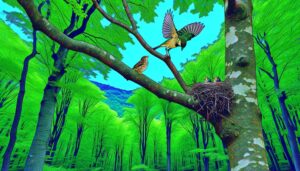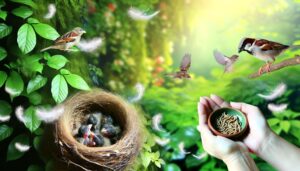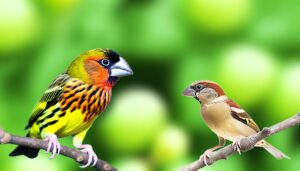Do Blue Jays Eat Baby Sparrows: Understanding Their Impact
Yes, Blue Jays do eat baby sparrows. They're omnivorous and adapt their diet based on what's available, consuming nuts, seeds, fruits, and insects.
Opportunistically, they'll also prey on small vertebrates like baby sparrows, especially during breeding season. Blue Jays have sharp beaks and agile flight, allowing them to target and consume nestlings and eggs.
This predation impacts sparrow populations by reducing reproductive success and causing behavioral adjustments. Understanding these interactions could help you find effective strategies to protect vulnerable sparrow nestlings.
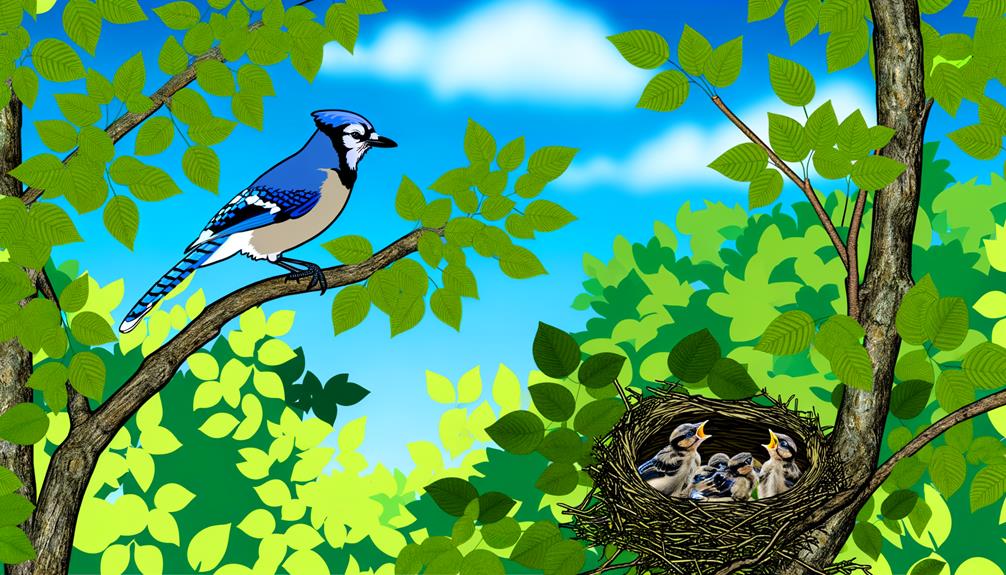
Key Takeaways
- Blue Jays prey on smaller birds, including baby sparrows.
- They target nests, especially during the breeding season.
- Blue Jays have sharp beaks and agile flight for hunting nestlings.
- They consume eggs as part of their predatory strategy.
- Predation by Blue Jays impacts sparrow reproductive success.
Blue Jay Diet Overview
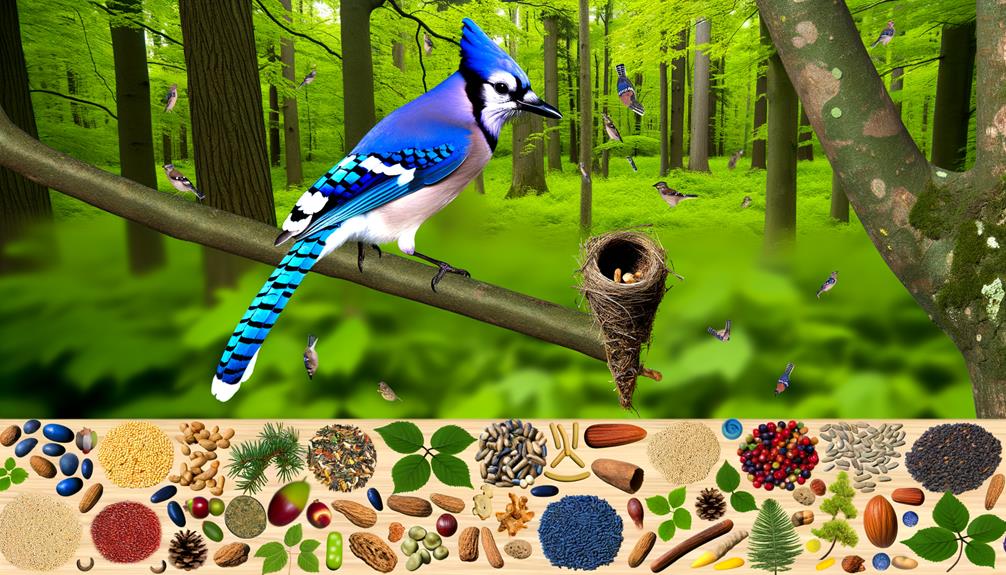
Have you ever wondered what exactly makes up a Blue Jay's diet? Blue Jays are omnivorous, meaning they consume both plant and animal matter. Their diet primarily consists of nuts, seeds, fruits, and insects. They're particularly fond of acorns and will often store them for later consumption.
Additionally, Blue Jays eat caterpillars, beetles, and grasshoppers, which help control insect populations. They also consume small vertebrates like frogs and mice occasionally. By understanding their varied diet, you can see how versatile and adaptable Blue Jays are in their feeding habits.
Supporting these birds with diverse food sources in your garden can help maintain their health and contribute to a balanced ecosystem.
Opportunistic Feeding Habits
Surprisingly, Blue Jays exhibit opportunistic feeding habits, taking advantage of various food sources as they become available. You'll find that these birds don't limit themselves to a fixed diet. Instead, they adjust based on what's accessible.
Their diet includes:
- Seeds and nuts – essential for their energy needs.
- Insects – providing essential proteins.
- Small vertebrates – occasionally part of their diet.
This adaptability helps them thrive in different environments, ensuring they meet their nutritional requirements. Their behavior highlights a vital aspect of nature: flexibility.
Predatory Behavior Instances
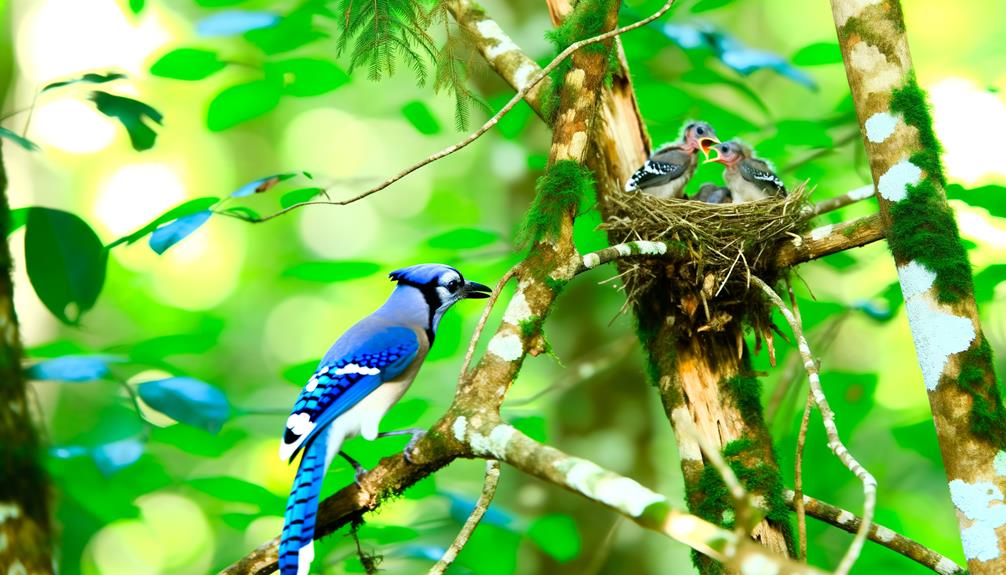
Blue Jays frequently exhibit predatory behavior by preying on smaller birds, including baby sparrows, to fulfill their dietary needs.
You'll often see them targeting nests during the breeding season, seeking out vulnerable chicks. Their sharp beaks and agile flight make them effective hunters.
Observations reveal that Blue Jays will patiently wait for the opportune moment to strike, ensuring minimal resistance from parent birds. They're known to consume eggs as well, indicating a versatile predatory strategy.
By understanding these behaviors, you can better grasp the complex interactions within avian ecosystems.
This knowledge can help in creating balanced environments, aiming to protect vulnerable species while acknowledging the natural instincts of predators like Blue Jays.
Impact on Sparrow Populations
The predatory behavior of Blue Jays can have a substantial impact on sparrow populations. This impact is particularly evident during the breeding season when Blue Jays prey on eggs and chicks. This predation can lead to reduced reproductive success for sparrows, resulting in fewer fledglings and directly affecting population growth.
One concerning effect of Blue Jays' predation is the observed behavioral changes in sparrows. Sparrows might become more secretive or alter their nesting sites in response to the threat posed by Blue Jays. These behavioral changes can have consequences on the overall health and survival of sparrow populations.
Furthermore, the decline in sparrow populations as a result of Blue Jays' predatory behavior can lead to ecosystem imbalance. Sparrows play a vital role in the food web, and a decrease in their numbers can disrupt the balance within the ecosystem. This disruption can impact other species that rely on sparrows for food or for fulfilling other ecological roles.
How to Protect Nestlings
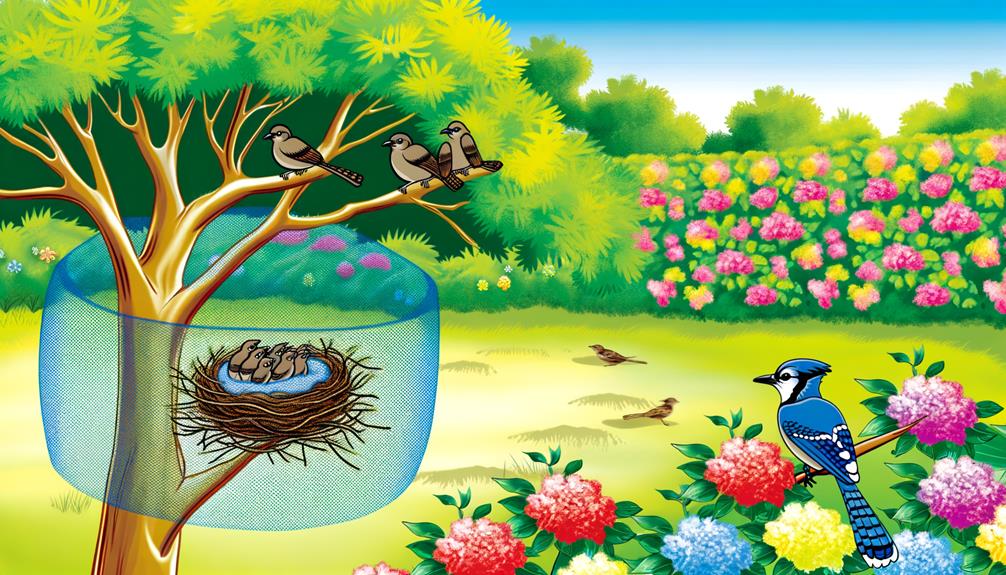
To safeguard nestlings from Blue Jay predation, consider installing nest boxes with predator guards and placing them in locations that are less accessible to these birds. Use a nest box with an entrance hole no larger than 1.25 inches in diameter to prevent Blue Jays from entering.
Position the box at least six feet above the ground and away from dense shrubs where predators can hide. Installing baffles on poles can deter climbing animals.
Regularly monitor and clean the nest boxes to guarantee a healthy environment for the sparrows. Additionally, providing ample food sources and fresh water in your yard can help reduce competition and stress, giving sparrows a better chance to thrive.
Your efforts can greatly impact sparrow survival.
Conclusion
You've learned that blue jays' diet is varied, their habits opportunistic, and their predatory behavior occasional.
You've seen how these traits impact sparrow populations and discovered methods to safeguard nestlings.
By understanding blue jays' dietary patterns, recognizing their opportunistic feeding, and witnessing their predatory tendencies, you can better protect vulnerable sparrows.
This knowledge empowers you to create safer environments, ensuring both species can coexist.
Embrace these insights and actively contribute to a balanced ecosystem.


